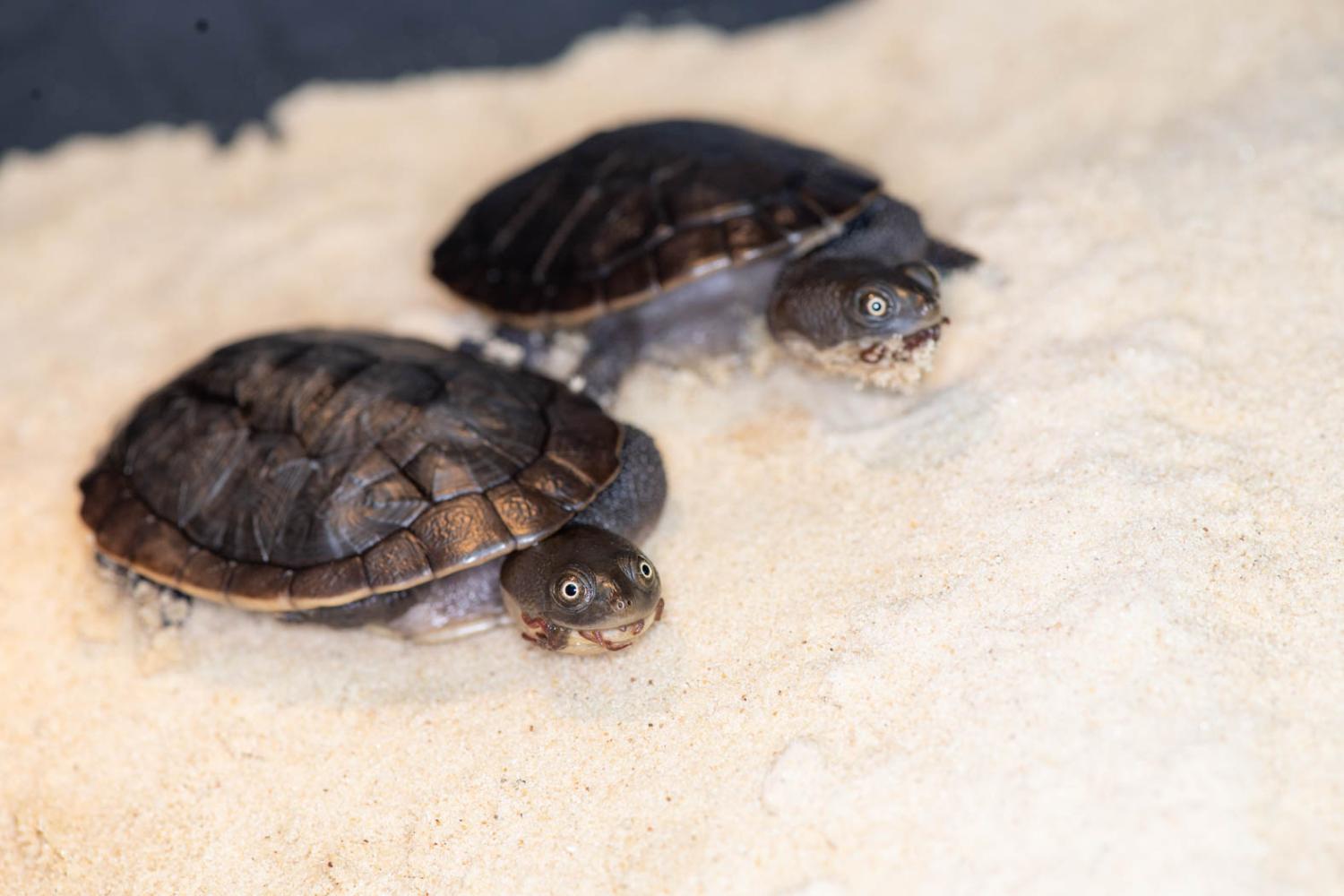Like many people walking around the Columbus Zoo and Aquarium, I “ooooh” and “aaaahh” when I catch sight of a cute, fuzzy animal curled up in a cave or tree, and I have also gushed after seeing anything with little hooves frolicking about on boulders and logs. However, there is a high level of adorableness whenever I come face-to-face with a baby Roti Island snake-necked turtle!

It’s fascinating to see their tiny shells, non-retractable necks, and perfectly-circular non-blinking eyes that follow you as you walk by. These adorable little reptiles hail from Indonesia and are critically endangered. Here at the Columbus Zoo and Aquarium, we’re proud of the conservation work that our reptile keepers have done with the snake-necked turtle…and as an Animal Nutrition Assistant at the Zoo myself, it’s a pleasure to do my part by providing them with nutritious food!
Here are 3 Facts about Snake-Necked Turtle Nutrition
- Baby snake-necked turtles are only big enough to ingest a small number of black worms that are specially-ordered for them by the Animal Nutrition team. Black worms are ordered alive because baby snake-necked turtles are not too keen on frozen or thawed foods. Once an order is placed, the worms are tracked until they reach our doorstep (typically in less than 24-hours!), so they arrive alive and well, and we have fresh, nutritious worms to deliver to our Reptile department.
- You may be wondering if the baby snake-necked turtles eat other types of worms, and they do. Earthworms are too big, and mealworms are too thick, but there are a few other small, wiggly items that the turtles enjoy… including mosquito larvae, daphnia (water fleas), and live brine shrimp. Fun fact: baby snake-necked turtles wean themselves off of worms when they are between three months to a year old. Hungry yet?
- The baby snake-necked turtles in our care receive a variety of pellets to eat as well, which they love because of the size, shape, ingredients, and texture. They’re also formulated to provide proper nutrition for them to thrive and grow. The first pellet is formulated for bigger reptilians, but the keepers break them into halves and quarters, and as the pellets absorb water, they sink to the bottom of the pool. The second pellet is a smaller, round pellet that floats. The turtles are able to swim to the water’s surface where the pellets have been sprinkled and strike out their long necks to scoop up as many pellets as they can fit in their mouths.
The next time you are in your kitchen, think about what considerations you make when preparing a meal… and multiply that by 10,000, which is the number of animals the Animal Nutrition team feeds every day at the Zoo!
If you enjoy learning about snake-necked turtles and other reptiles, visit the historic Reptile Building at the Columbus Zoo and Aquarium.









